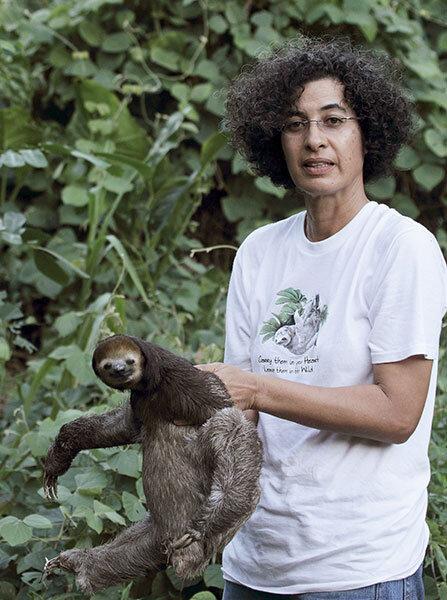Meanwhile... in Suriname, the all-volunteer Green Heritage Fund Suriname is devoting itself to the rescue of three-toed sloths
Loading...
In Suriname, the all-volunteer Green Heritage Fund Suriname is devoting itself to the rescue of three-toed sloths.
Large numbers of the sloths – which are famously laid-back but also intelligent and gentle creatures – live in the country’s rainforests. But a building boom is encroaching on their natural territory and, more and more, residents in Paramaribo – the nation’s capital – are finding disoriented and injured sloths on their roads and in their yards. Neither the city zoo nor local animal rescue services have been eager to deal with them.
That’s why Monique Pool left her job as a translator to found the Green Heritage Fund and create a sloth sanctuary in 2005. Sloths are hard to care for. Despite their easygoing temperaments they have delicate digestive systems and are finicky eaters. But Ms. Pool has learned how to nourish and care for them and responds in person to calls from residents who report sloths in need of help.
Her aim, she says, is always to reintroduce sloths to the rainforest as quickly as possible. She stresses that they are wild animals and not pets. But occasionally a sloth cannot be reintroduced to the wild and must stay permanently at the sanctuary or sometimes in Pool’s home.
“They are very special animals,” she told the International Climate Initiative. “I am fascinated by them.”
In Gemert, Netherlands, what is believed to be the first concrete bridge in the world to be made by a 3-D printer was opened to the public.
The 26-foot bridge was built across a small stream and is principally intended for cyclists, although its designers say it could handle the weight of 40 large trucks.
The bridge, which is made of reinforced, prestressed concrete, took three months to build and has 800 layers.
“The bridge is not very big, but it was rolled out by a printer, which makes it unique,” said Theo Salet, from the Eindhoven University of Technology, as reported by The Guardian.
In Guinea-Bissau, farmers are rejoicing over the soaring worldwide appetite for their No. 1 crop: cashews. The nut – perceived as a healthy snack – is experiencing a wave of popularity. Demand has jumped 53 percent since 2010, according to Bloomberg.
In tiny Guinea-Bissau, 85 percent of the population works in cashew production. The West African nation is the third-largest producer of the nut on the contient. [Editor's note: This article originally misstated the volume of Guinea-Bissau's cashew production.] Farmers there say they are seeing record revenues. “I have never earned as much money as this year,” cashew farmer Braima Seidi told Agence France-Presse. Mr. Seidi said he earned enough this season to build a house, purchase a motorbike, and buy a ton of rice for his family.






